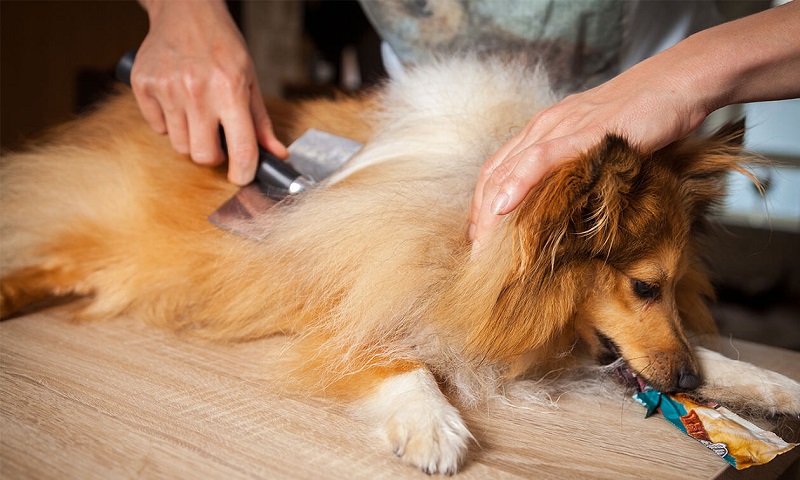Many pets, particularly dogs and cats with thick or double coats, naturally shed. Regular fur loss is normal, but excessive shedding can be annoying for pet owners who want to maintain a clean environment. Although de-shedding methods and treatments have gained popularity as ways to deal with this problem, how successful are they in reality? Does deshedding work, and can it truly reduce shedding effectively? Pet owners may choose the best course of action for their furry animals by being aware of the science of de-shedding and knowing what to anticipate.
How Does Shedding Work?
As part of a biological process, pets shed their damaged or old fur to make room for new growth. Many breeds shed more during seasonal changes, usually in the spring and fall, especially those with double coats like Siberian Huskies or Maine Coon cats. The replacement of the thick undercoat and outer guard hairs aids in controlling body temperature. Although shedding is inevitable, you can lessen the amount of fur that ends up on your floors and furnishings by removing any loose fur.
What Are De-shedding Tools and How Do They Work?
De-shedding tools are made to get rid of loose undercoat fur without causing skin irritation or topcoat damage. Grooming gloves, de-shedding brushes, and specialty combs with fine teeth are common tools. In order to gather fur that is ready to shed but hasn’t fallen out yet, these instruments reach beneath the outermost layer of hair. The amount of loose fur your pet naturally loses about the house can be decreased with regular use.
Which Types of Coats Benefit Most from De-shedding?
Pets with thick, dense, or double coats respond well to de-shedding treatments. Usually, breeds that benefit the most include Norwegian Forest Cats, German Shepherds, and Golden Retrievers. However, de-shedding equipment might not have a big impact on pets with single-layer coats or short hair because they shed less than other types. To prevent skin irritation or harm, it’s critical to select a tool that is suitable for the type of coat your pet has.
What Are the Realistic Expectations for Pet Owners?
De-shedding tools reduce loose hair but won’t stop it. Because shedding is natural, even with regular care, some fur loss is inevitable. Cats’ hairballs, fur build-up, and coat condition improve with regular grooming with de-shedding tools. When paired with frequent bathing and a nutritious diet, de-shedding can enhance coat quality and reduce shedding.
Conclusion
Controlling shedding requires not just de-shedding gear but also taking care of your pet’s health. Make sure your pet eats a healthy diet full of omega fatty acids, which promote the health of their skin and coat. Frequent veterinary examinations can help rule out conditions that could cause irregular shedding, like as allergies or hormone abnormalities. Lastly, maintain a regular grooming regimen to control loose hair, particularly during periods of high shedding.





